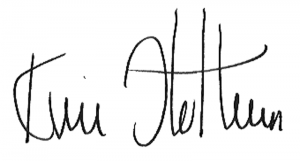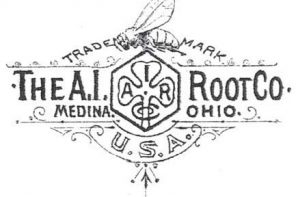By : Kim Flottum
Take a look at that article on thermal efficiency on page 61. Read it, then read it again. I found it amazing how much honey it takes to make honey. When you look at that hollow tree and its very thick walls, then compare to the walls of the hives we use, I wonder why bees bother to stay with us. The homes we give them are remarkably inefficient. Not quite paper thin, but almost so, the heat exchange between inside and outside, cold in Winter, hot in Summer, quite simply wears out our bees. They die faster than they ought to, they work harder than they ought to, they use more honey making honey than they ought to, they spend more time not collecting nectar than they ought to, and they make less honey for us than they ought to. We are, quite simply, wasting a lot of their time, energy and resources.
Thicker walls seem to be one answer. Look at the thickness of hollow trees in the wild. Inches thick, providing lots and lots of insulation. Easier to keep warm in the Winter, easier to keep cool in the Summer.
Adding insulation to a beehive in the Winter certainly makes sense. Making the temperature difference greater between the outside of the wall and the inside of the wall makes keeping the cluster temperature easier, requiring less energy – food – than if the empty space inside a hive surrounding the cluster is the same as the outside temperature. And, for the most part, that’s a pretty close picture to what’s going on. The only real warm place in one of our hives is the cluster, and a bit of the space directly above the cluster. The rest is about as cold as it is outside.
And the same for warm summer days. Did you ever feel the inside of a hive on the south or west side on a hot Summer day? It is warmer than the north side, certainly. And that heat has to be removed, this hive has to be cooled, so bees have to be fanning. Of course warm air helps dehydrate the nectar coming in, if nectar is coming in, but the air has to be dry so it can absorb the moisture being released by the nectar, and to get dry air in and humid air out fanning takes place. That takes energy. Honey energy.
Thicker walls. But thicker walls mean heavier walls. I use eight frame equipment because of the weight of 10-frame equipment. If those boxes had walls that were 10 inches thick, I’m thinking I couldn’t even lift a box, forget about frames and honey inside. But that’s what trees in the wild have. That’s what lots of house walls have.
What bees want is a cavity about the volume of a deep super, protected from the elements, and an easy to defend entrance, preferably on the bottom of the cavity. The thicker the walls the better, but seldom do they take that measurement. It’s just that trees in the wild mostly, but not always, have thick walls.
So this year I’m looking into those Styrofoam/polystyrene/polypropolene boxes that are available. And yes, I know, they’ve been around for decades, claiming to keep bees warmer in the winter, and cooler in the summer. Sometimes you have to hit me a couple of times before things start to sink in. I’ll let you know how they turn out a year from now. Or ask one of the sellers. They already know.
We recently did a podcast with Peter Nelson, producer of a new documentary on the commercial pollination business in the US. He’s also a beekeeper so he knew what he was doing. One of the people he interviewed was Johnathon Lundgren, from Blue Dasher Farm, who is a strong advocate of sustainable agriculture, especially working with the soil. To change big ag, he summarized, wouldn’t happen from the top down, but from the bottom up – change customer demand from destructive practices to better farming, and it will happen.
In early March a couple of similar events happened. A group representing tomato workers in Florida have convinced several big chain fast food companies that they should be using fruit from farms that have turned around their labor practices, ending physical abuse, even slavery of their workers, and paying them local minimum wage. Fast food customers have caught on and are, for instance, banning some from campuses and even towns if they are using fruit from non-complying companies.
Suppose we could do that with honey on grocery store shelves?
Yes, we really are going to have A.I. Root, L.L. Langstroth, Jim Tew, Wyatt Mangum, Tammy Horn-Potter, Gerry Hayes, Gabe Dadant and Jim Thompson here in October to talk about the history of American beekeeping. If you’ve always wanted to meet any of these people up close and personal, this will be your chance. You can ask A.I. about his windmill driven printing press, or L.L. about that fancy front porch on his new hives, or Wyatt about all those different kinds of boxes, or Jim about the hive tool collection he has, or Gerry about the ABF, the AHPA, The American Honey Institute, or Gabe about the history of the Dadant business, or Jim Tew about the thousand authors who have written books about bees, or Tammy about all the creations American women have had on bees and beekeeping. But you can’t if you don’t register, and you can do that on our web page.
Insulation.









